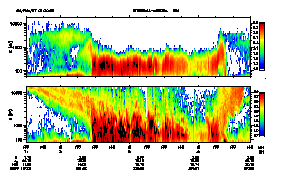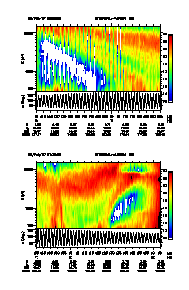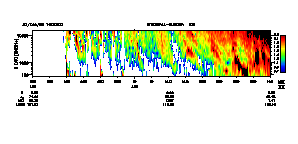

This page is a mirror of the ION SADS page available at
http://sads.cnes.fr:8010. Besides the
information already available on this page, there you can browse the ION
QuickLook images.
The ION experiment was designed and built by the Centre d'Etude Spatiale
des Rayonnements (CNRS/University of Toulouse, France) and funded by a CNES (French National Space
Center) grant. The integration tests were performed jointly with the Space Research Institute, Moscow (IKI).
CESR
9 avenue du colonel Roche
31028 Toulouse cedex 4, France
Phone: 33 5 61 55 66 76
Facsimile: 33 5 61 55 67 01
E-mail: sauvaud@cesr.cnes.fr
The ION experiment flown on the Interball-Aurora mission performs
simultaneous ion and electron measurements. Two mass spectrometers
looking in opposing directions perpendicular to the satellite
spin axis, which points toward the sun, measure ions in the mass
and energy ranges 1-32 amu and ~ 0 to 14,000 eV. The ion measurements
are complemented by simple electron spectrometers performing measurements in
the energy range ~10 eV (or 60 eV) to 20,000 eV.
The design of the detector heads of the ION-1 and ION-2 mass
spectrometers is based on the principle of the Wien filter, where
the mass filtering is performed by crossed electric and magnetic
fields. The energy over charge (E/Q) selection is made by a cylindrical
electrostatic analyzer placed in front of the filter. At each
energy step, the electric field in the magnetic analyzer is programmed
in order either to scan 2 or 4 ions (H+, He++, He+, O+).
Two spectrometers, ION3 and 4, measure electron fluxes. They
consist of two cylindrical electrostatic analyzer heads and associated
electronics.
The ION experiment is working since the end of September 1996.
Data are regularly obtained in the cusp, cleft, in the nightside
auroral zone showing interesting and newly observed features.
 |
 |
 |